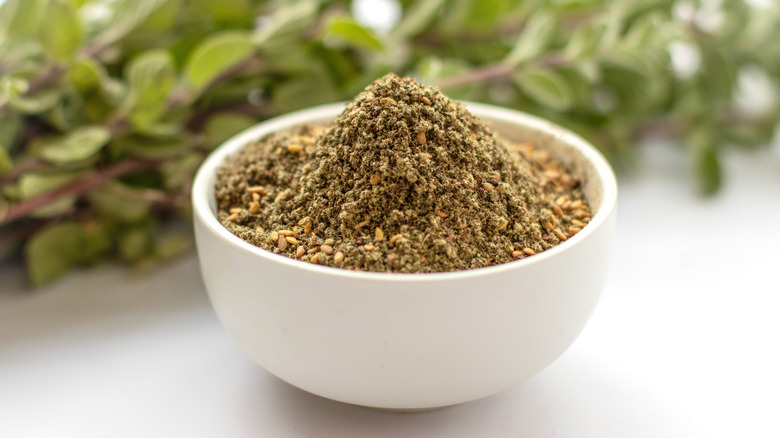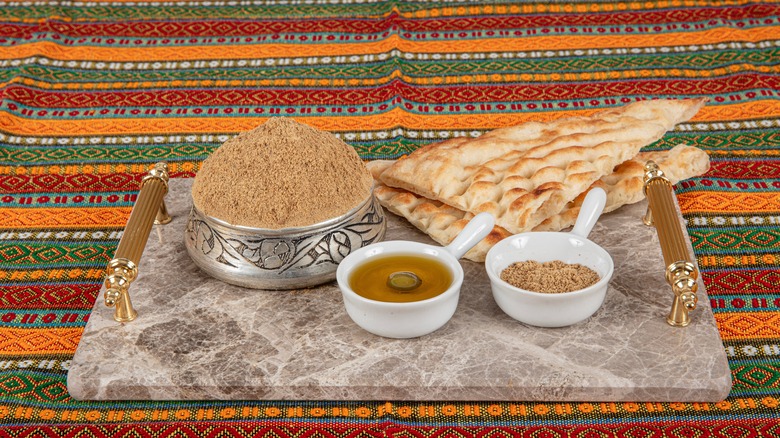What Is Za'atar And How Do I Use It?
You may have seen earthy za'atar seasoning piled up in soaring mountains in an Israeli shouk or tucked away in packets in your local spice shop. But if not, you may be wondering: What is za'atar? Like food, spices go through trends in cooking. They might not be as widespread in popularity as other viral food trends, but spices often go in and out of style. Za'atar, for instance, has spent a decent amount of time in the spotlight. While it is traditionally sprinkled on pita bread, it's becoming more ubiquitous, popping up on menus and even landing atop the innocuous avocado toast.
Za'atar is the name for a Middle Eastern spice blend featuring oregano, sumac, cumin, sesame seeds, black pepper, and salt. However, its namesake is a type of wild thyme, which is sometimes included in certain regions' versions of the blend. The seasoning mixture tends to change depending on what part of the world it's being made. For example, in Palestine, caraway seeds are added. In Lebanon, sumac berries are thrown in, giving it a distinctly dark red color.
How to make and use za'atar at home
Homemade za'atar is easy to make yourself. However, you can buy it pre-made and put it on anything you feel would benefit from an added nutty and herby flavor. First and foremost, there is no reason not to make this seasoning at home. Mix sumac, dried thyme and oregano, sesame seeds, sea salt, and marjoram with a mortar and pestle, or blitz the spices in a blender.
After you have made space for this new ingredient in your spice cabinet, it will open the door to numerous culinary possibilities. One of the most popular applications for this spice blend is as a spice rub for different proteins, from red meat to chicken to fish. Vegetarian or vegan? It works great to season sauteed or roasted vegetables for an easy side dish. You can also incorporate this spice into the dough for homemade naan, pita bread, or biscuits; if you prefer another dip for your bread, use it in hummus, labneh, or yogurt-based condiments. If you find rice, farro, or other cooked grains somewhat bland without extra seasoning, reach for a sprinkle of this flavorful blend. Feel free to experiment and discover your new favorite uses!

